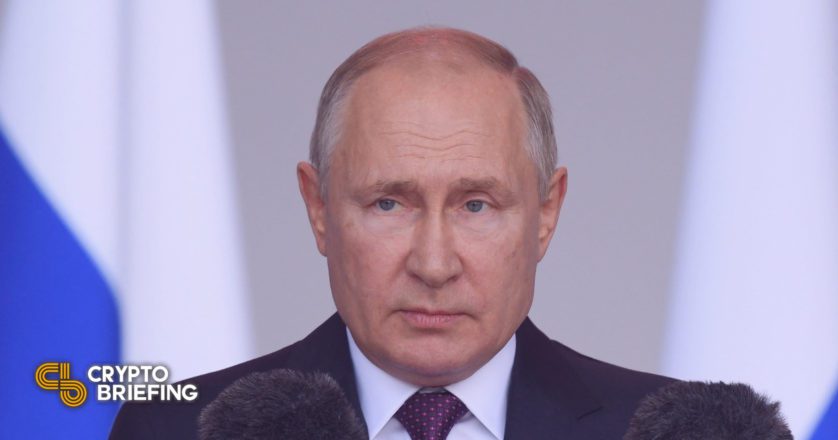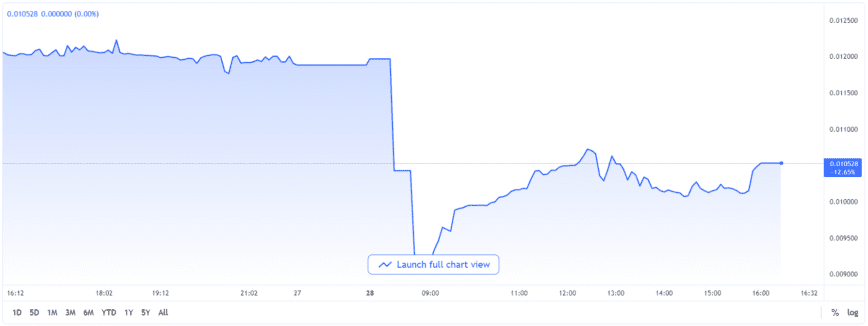As Sanctions Pile, Bitcoin Flips the Russian Ruble
The Russian ruble now has a smaller market cap than Bitcoin after plunging roughly 11% against the U.S. dollar Monday.

Key Takeaways
- The West's severe economic and financial sanctions against Russia have caused the ruble to plummet by roughly 11% against the U.S. dollar.
- As a result, Bitcoin now has a bigger market capitalization than the ruble by roughly $120 billion.
- Exchange data shows that Russians have turned to crypto in seeking refuge from the falling national currency.
Share this article
Thanks to unprecedented financial sanctions from the West, Bitcoin now has a higher market capitalization than the Russian ruble.
Russian Ruble Plummets Following Western Sanctions
Bitcoin has flipped the Russian ruble.
Russia’s currency has plummeted around 30% against the U.S. dollar today, dropping from $0.012 to $0.009 before posting a slight recovery to just above one cent. The fall comes after Western nations imposed an unprecedented, crippling array of economic sanctions on Russia over its invasion of Ukraine.

According to the latest data from Russia’s central bank, the country’s M2 money supply for January was around 65.3 trillion rubles, which at the ruble’s current market price of one cent is worth around $650 billion—roughly $120 billion less than Bitcoin’s total market capitalization.
Russian citizens and foreign institutional investors began divesting from their cash and other ruble-denominated holdings immediately after the attack on Ukraine. However, the West’s move to cut the country from SWIFT, freeze the Bank of Russia’s reserve assets held overseas (which amount to over 50%), and the U.S. Treasury’s decision to escalate the sanctions has worsened the situation for the Russian economy and its currency.
The ruble’s sharp devaluation is likely to lead to a significant drop in the standard of living for the average Russian. The country is still reliant on many imported goods, meaning the prices of those items will surge in ruble-denominated terms. The Russian government will likely have to intervene by providing liquidity to mitigate broader industry failure and market breakdown. However, with no access to the international financial system and half of its dollar and euro-denominated reserves, it may have to resort to printing more rubles—a risky move that could trigger hyperinflation.
To prevent an even bigger equity and currency sell-off, Russia’s central bank didn’t open the Moscow Exchange for trading and increased the key rate from 9.5% to 20% Monday. The key rate is the interest rate at which banks can borrow money; it indirectly influences the cost of credit for borrowers and the circulating money supply of the ruble.
In seeking refuge from the collapsing rubble, Russian citizens have begun turning to crypto. According to data by blockchain analytics company Kaiko, ruble-denominated Bitcoin trades reached nine-month highs Thursday. In addition to the spike in trading volumes, Bitcoin is currently trading at a slight premium in Russia compared to the global average. On the peer-to-peer marketplace Localbitcoins.com, Russian traders are currently selling Bitcoin for 4,075,000 rubles ($42,869), around $2000 more than the current global average of $40,900.
Share this article
